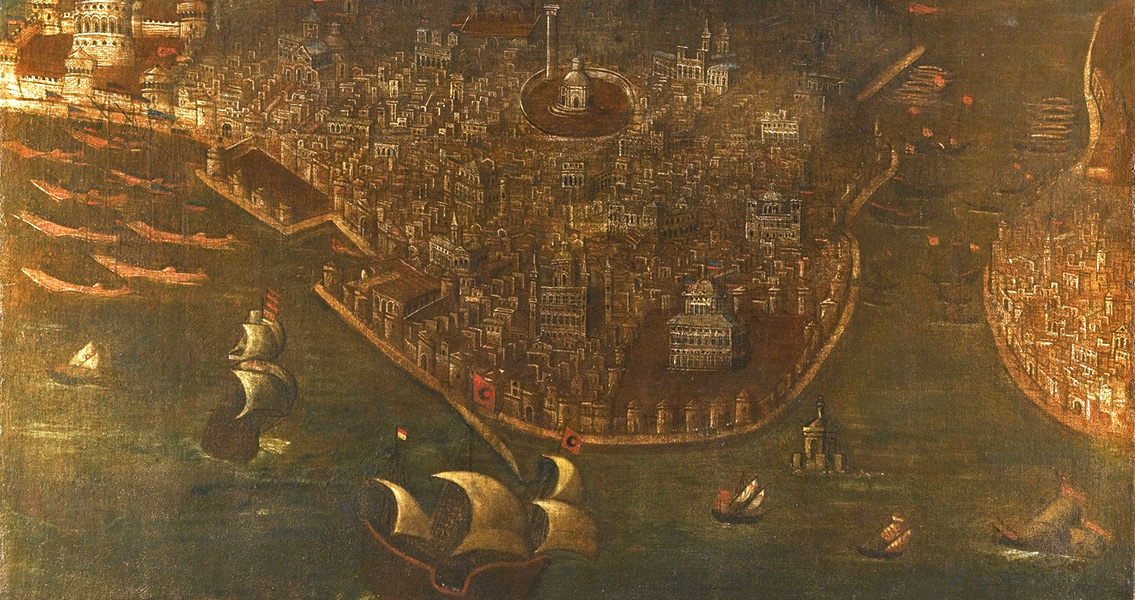<![CDATA[On 29th May, 1453, Constantinople fell to the armies of Sultan Mehmed II, bringing about the end of the Byzantine Empire. Constantinople (what is modern day Istanbul) was dedicated by Emperor Constantine the Great as his capital in 330 CE. The Byzantine, or Eastern Roman Empire, went onto survive and flourish for centuries after the Roman Empire in Western Europe had declined. While Rome had fallen, pushing Western Europe into the Dark Ages, the Byzantine Empire thrived thanks to its close proximity to a number of profitable trade routes and the protection offered by the Black Sea. The Sack of Constantinople in 1453 brought this empire to a brutal, bloody end, but the deterioration of Byzantium had set in well before its dramatic last days. In many ways following the pattern of the Western Roman Empire, internal strife and external invasions had gradually eroded the Byzantine Empire and set it into a spiral of decline. During the early years of the Byzantine Empire most of its population was comprised of freemen who had received land in exchange for military service. This land owning population in turn paid taxes to the state. Consequently, the Empire had a large tax base to support its continued prosperity, a consistently large armed forces to protect it from external invasion, and a population with a sufficient stake (land or property) in the Empire to have a direct interest in ensuring its continuity and stability. This situation began to change with the rise of the nobility, which upset the balance of society in the Byzantine Empire. The nobility absorbed huge chunks of land as their own, taking it away from much of the rest of the population. Poorer elements of the Empire were thus forced into a state of bondage, leading to the rise of serfdom which resulted in huge swathes of the population being loyal to a member of the nobility rather than the state. The empire lost its army and its tax base, and the need to hire a mercenary army led to the depletion of the treasury at a rate faster than it could be replenished. For the Ottoman Turks, Constantinople was a tempting target. For political reasons, its capture would symbolise the rise of their empire as the most powerful force in the region. Its location meant it had enormous tactical advantages, easy to defend and a perfect location to facilitate trade between East and West. Just as importantly, it was a city rumoured to be filled with gold, silver and precious gems, although how true this was following the years of decline is unclear. Mehmed II had ascended to the Ottoman throne in 1451, and quickly set about planning to take advantage of the Byzantine Empire's decline. Already having a fort on the Asian shore of the Bosporous, another Ottoman fort, known as Rumeli Hisari, was constructed on the European shore, giving Mehmet II control of the strait and cutting Constantinople off from the Black Sea. Constantinople's security became more precarious as Mehmed's armies captured Byzantine strongholds around Constantinople and surrounded the Greek cities of the Byzantine Empire, making them unable to send assistance to the capital. On 1st April, 1453, Mehmed's armies reached Constantinople, and were faced with the intimidating city walls which had not been breached for over two hundred years. Mehmed offered the city's defenders the opportunity to surrender and keep hold of their property, families and lives, but Byzantine's Emperor, Constantine XI, refused. On 6th April, 1453, the siege of Constantinople began. After 57 days the walls were finally breached by the Sultan's forces. The city was quickly overran, with many sources from the time and since describing a brutal massacre of the city's citizens. The fate of the last Byzantine Emperor is unclear - rumours persisted that he had somehow escaped the city, but officially his head was presented to Mehmed on the 29th May. Pope Nicholas V called a crusade to recover Constantinople, but no western European monarch was willing to send troops or money to the cause. The consequences for the region, and Europe as a whole, were clear. The Eastern Roman Empire had fallen and the Ottoman Empire, led by Mehmed II, (referred to Mehmed the Conqueror following his triumph) had risen to dominance in its place.]]>
The Fall Of Constantinople
